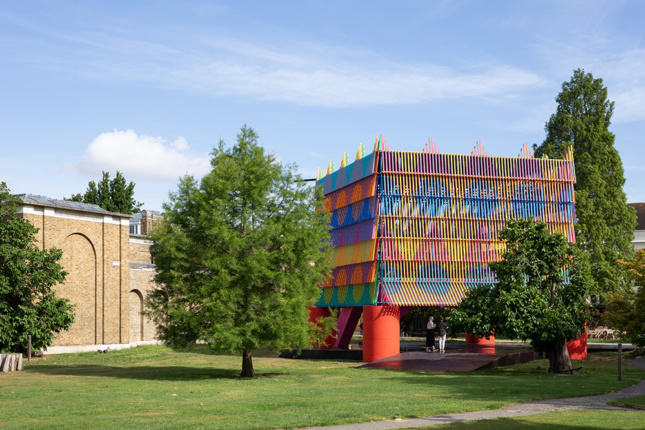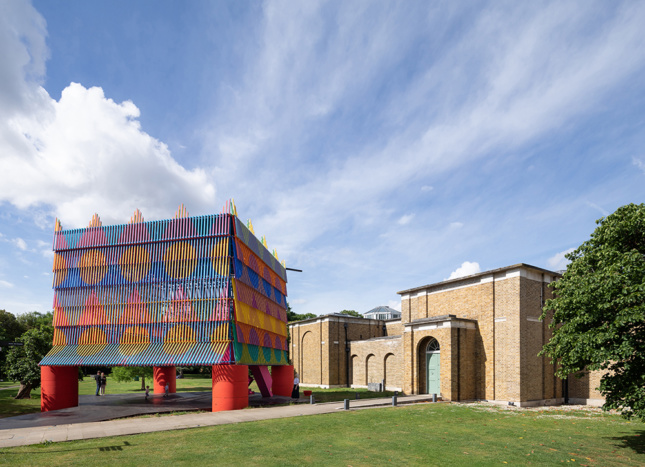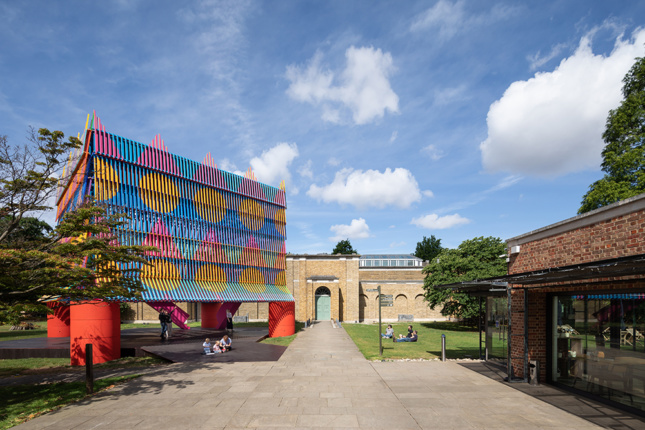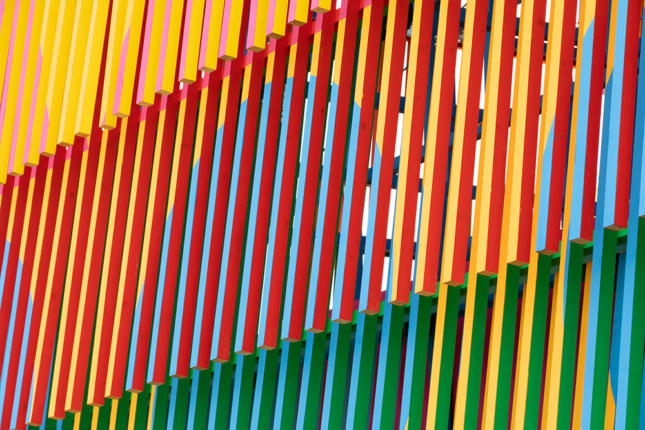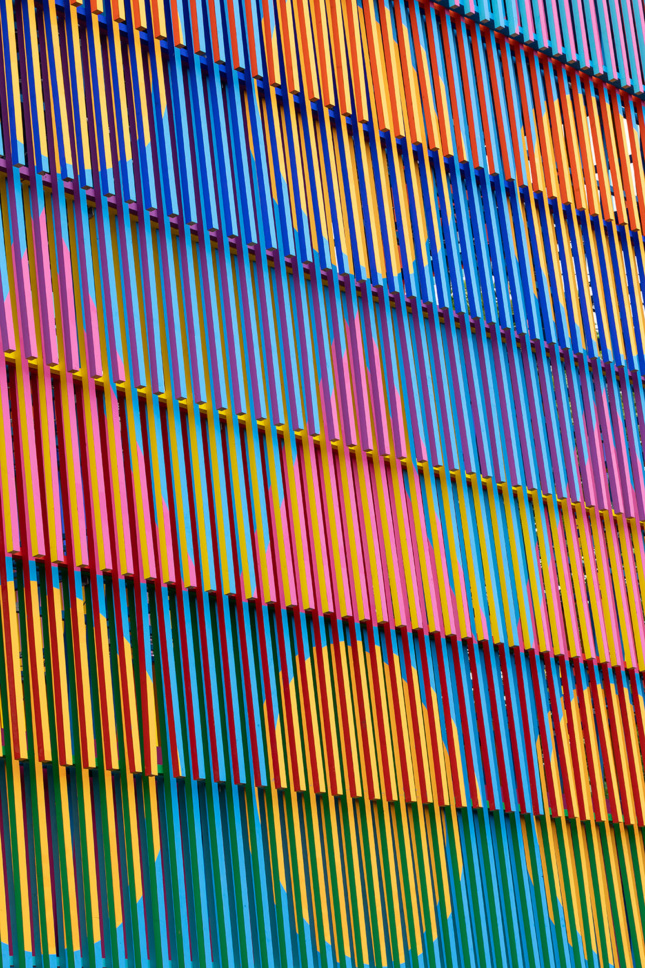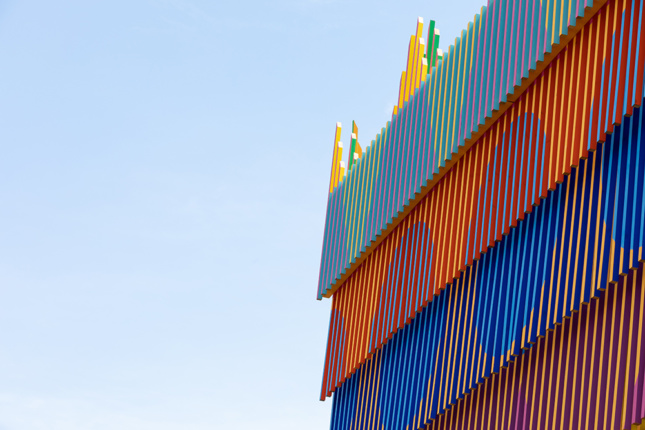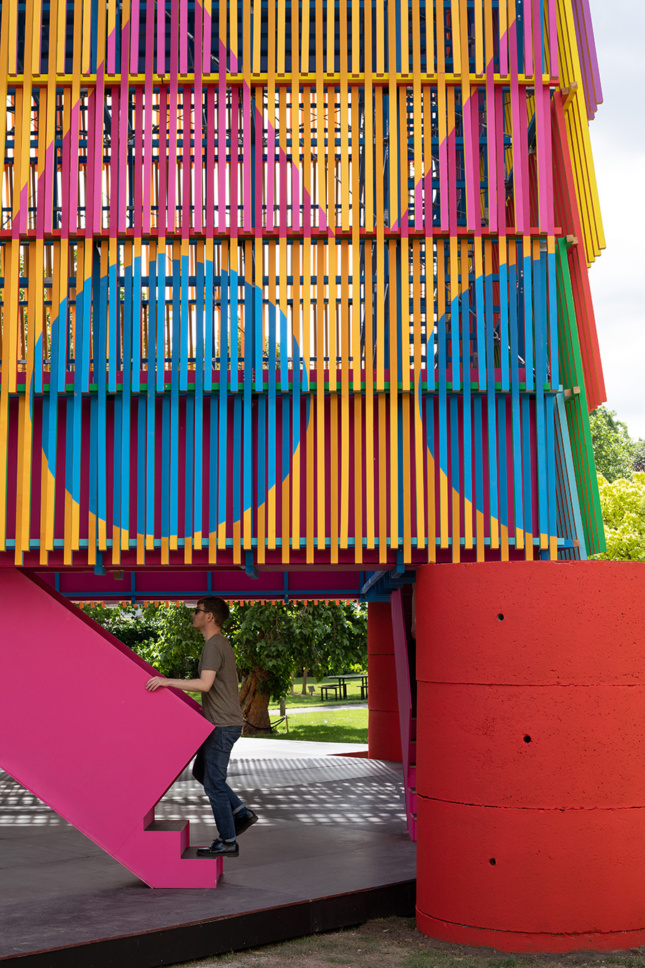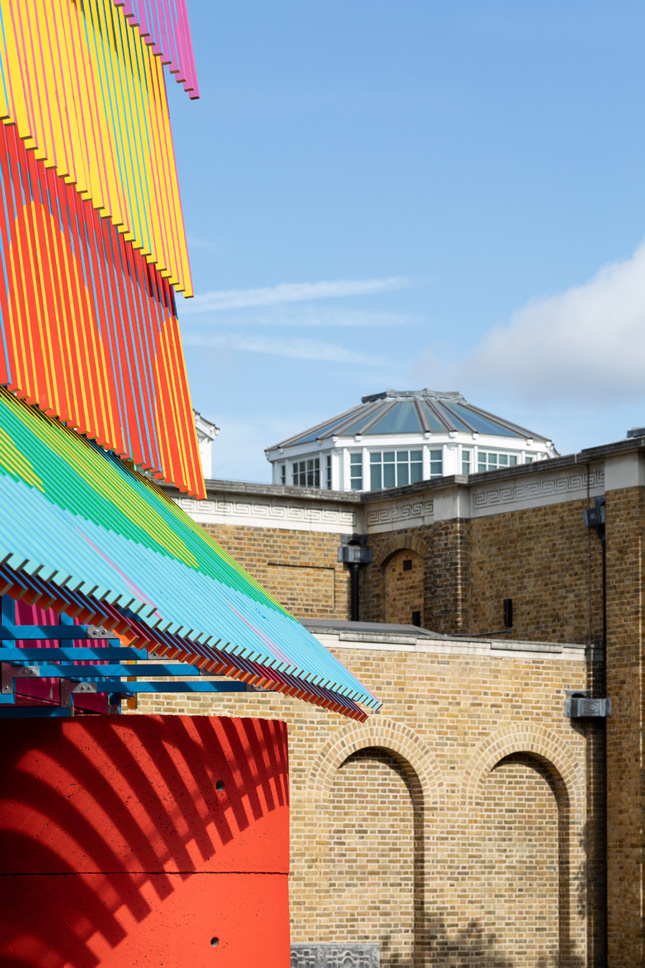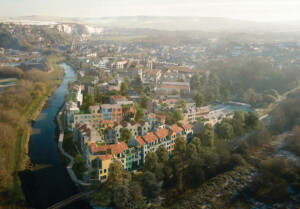What if, when on his Grand Tour, John Soane didn’t go to Italy, but to West Africa? What if, instead of going to Venice, he went to Lagos?
This was the question Dingle Price, co-founder of London studio Pricegore, posed when pitching the idea for a pavilion adjacent to the Dulwich Picture Gallery, the oldest purpose-built gallery in England, designed by Soane. The result is The Colour Palace, a gloriously colorful timber structure that nestles between Soane’s 202-year-old building and a residential street.
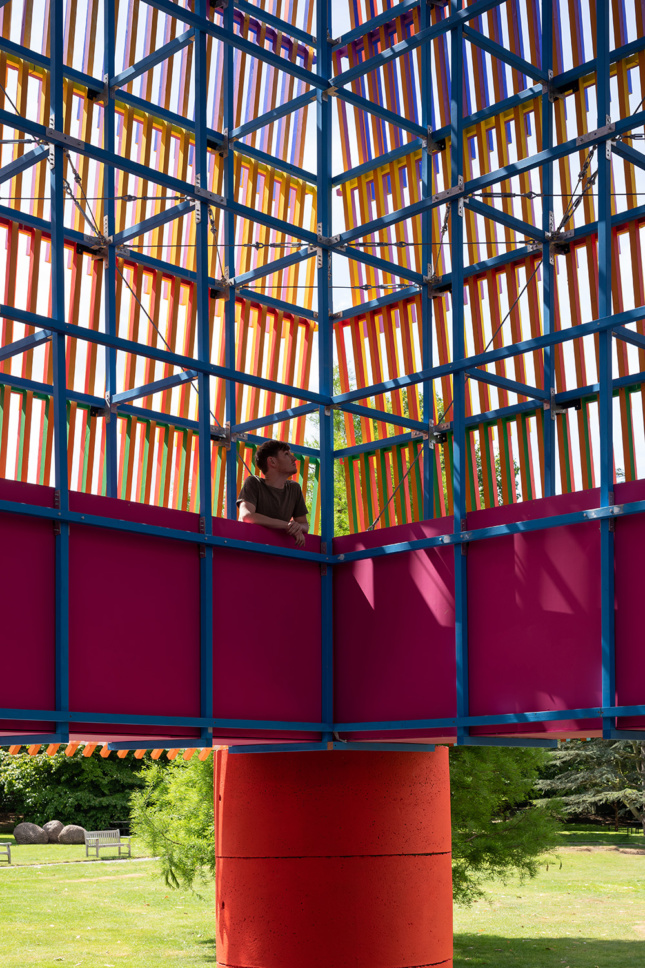
Price and fellow Pricegore cofounder Alex Gore do not hail from West Africa. Such inspiration came from artist and designer Yinka Ilori, who collaborated with the studio for the project.
Now based in London, Ilori drew upon markets in Lagos where he was raised. “I wanted to encapsulate the memory of color I have from those markets,” Ilori told AN. “Selling fabrics, color was everywhere.”
And at the new pavilion, color is indeed everywhere. When approaching it, hints of a cacophony of color can be spied: pink tips pop out above the park’s perimeter wall; beyond the trees, glimpses of blue and red can be seen through the green.
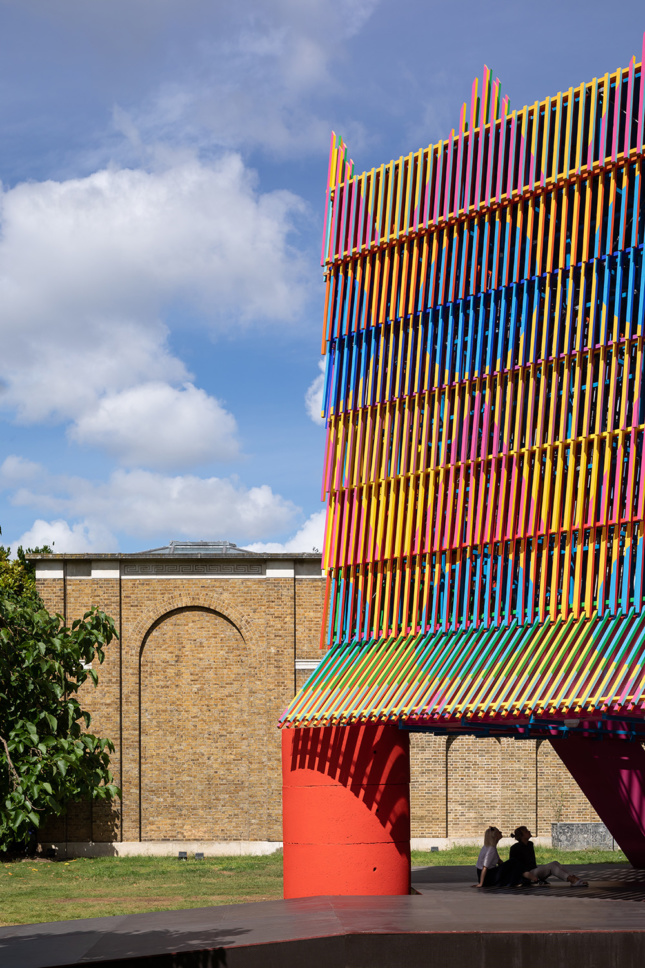
Closer inspection reveals thin, cuboid timber louvers (there are more than 2100) painted in green, yellow, blue, pink, red, and orange. The result makes the facade shimmer from the outside, blending the different tones in the process. Triangles and circles—motifs prevalent in Ilori’s work as a furniture designer—have been painted on the outside, causing the pavilion to look like a party hat. There’s an overriding sense of fun.
But the kaleidoscopic baptism doesn’t end there. The giant party hat sits on four five-and-a-half-feet-wide bright red concrete columns—unpolished and raw, they rise up from the earth. A pink elevated walkway traces the structure’s perimeter, and a blue timber internal support structure keeps it all up.
“Our work is very Euro-centric, Yinka’s is very West African,” Price explained. “We wanted to mix the two.” Ilori and Pricegore drew upon two precedents: an image of men carrying a thatched roof in West Africa and caryatids in Athens supporting the Parthenon’s entablature.
“Building in landscape, we wanted to lift the structure off the ground and retain the open sense of a garden,” added Gore.
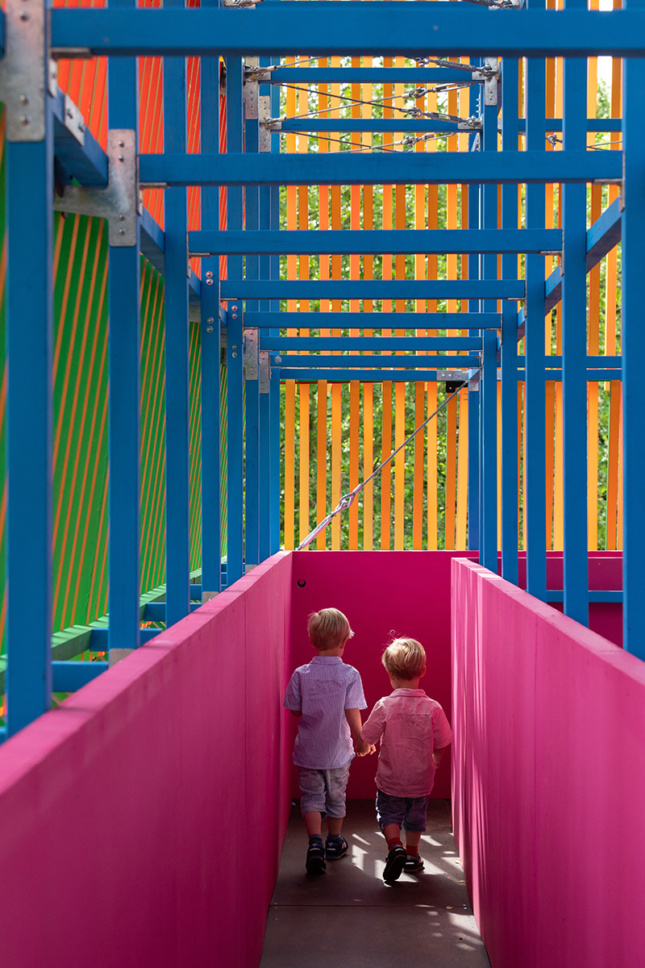
The pavilion, with its 1,560-square-foot base, is open on all four sides. Circles and triangles may adorn the exterior, but the square was most important to Pricegore, who deemed the shape essential to maintaining the structure’s relationship to the adjacent Soane-designed gallery. Soane used a strict orthogonal regime to conceive the gallery’s plan. So, too, has Pricegore, although the firm has offset the pavilion 45 degrees to the gallery to create a more welcoming dialog to visitors, allowing the various colors of the louvers to gradually change upon approach.
Gore continued: “The pavilion is accessible to everyone. A child can enjoy this as much as an art critic.”
The Colour Palace is the result of a partnership between the Dulwich Picture Gallery and the London Festival of Architecture. The pavilion is open to the public until September 22, 2019.






